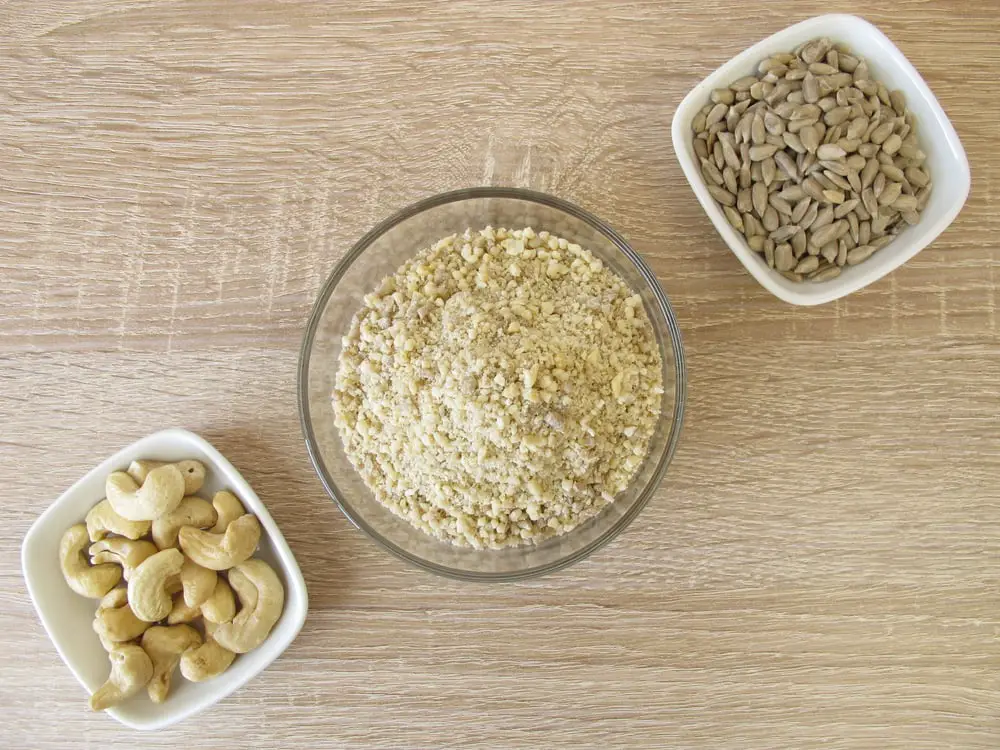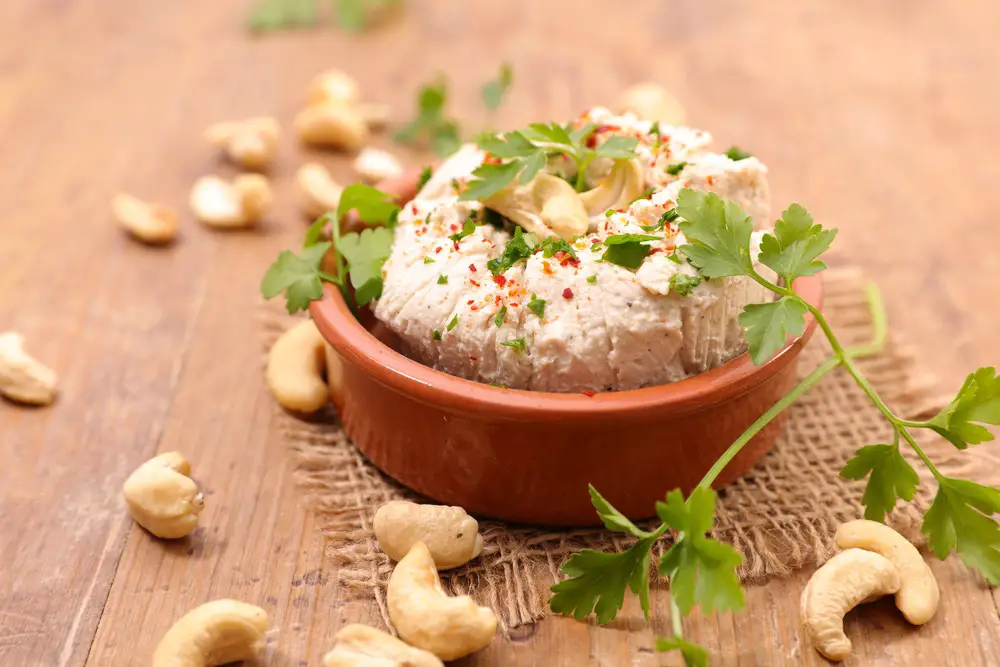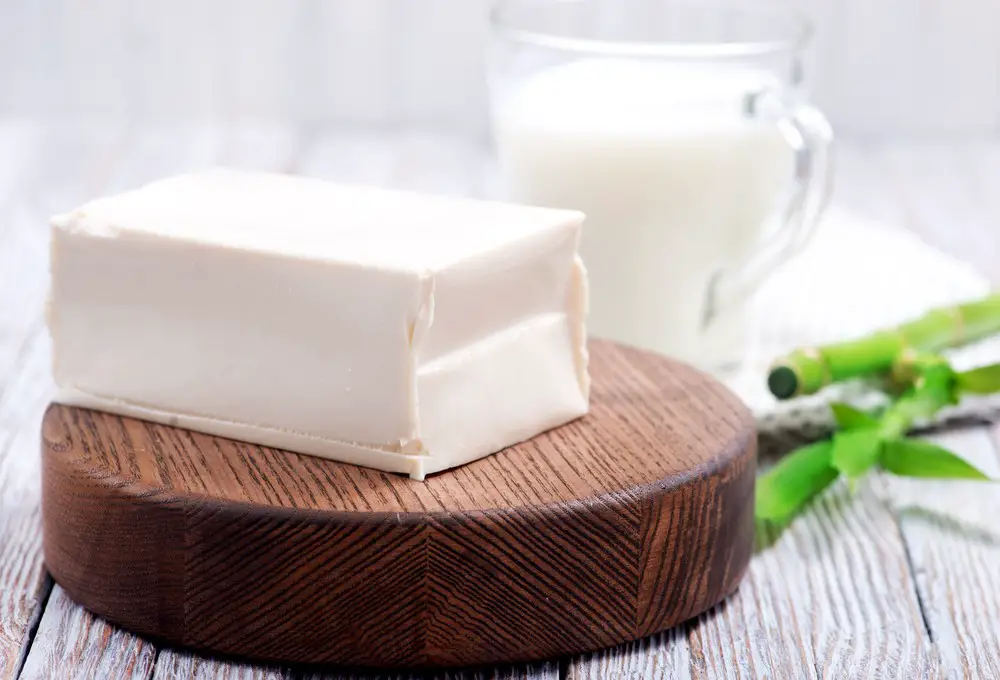Learn the secrets of making delectable vegan cheese with our comprehensive guide. This step-by-step tutorial will take you through creating mouthwatering vegan cheese using raw cashews, refined coconut oil, olive brine, garlic, and salt.
Whether you’re a seasoned vegan cheese connoisseur or just starting your dairy-free journey, this guide is tailored to meet your needs. Prepare to elevate your culinary skills and create irresistible vegan cheese in your kitchen.
The Process: Creating Vegan Cheese
To create vegan cheese, you’ll need to gather the raw cashews, refined coconut oil, olive brine, garlic, and salt listed in the simple guide.
Unlike dairy cheese, vegan cheese utilizes plant-based milk and fermentation with bacteria to mimic dairy textures and flavors.
The aging and coagulation process in vegan cheese is unique, requiring attention to detail to achieve the desired results. Ensuring hygiene is crucial to avoid pathogens during the cheese-making process.
The raw cashews will form the cheese base, while the refined coconut oil will contribute to its creamy texture. Olive brine and garlic will add depth of flavor, and salt will enhance the overall taste.
 Key Ingredients For Vegan Cheese
Key Ingredients For Vegan Cheese
When making vegan cheese, you must carefully select key ingredients crucial to achieving the desired texture and flavor. Common ingredients for vegan cheese include:
- Plant-based milks such as cashew, almond, or soy
- Nuts like raw cashews
- Tapioca for texture
- Agar for firmness
- Nutritional yeast for a cheesy flavor
- Vegetable oils for richness
Each ingredient serves a specific purpose. Plant-based milks provide a creamy base, while nuts add a rich and smooth consistency. Tapioca and agar contribute to the cheese’s structure, while nutritional yeast offers a cheesy flavor. Vegetable oils enhance the overall richness.
Popular Varieties Of Vegan Cheese
The world of vegan cheese is rich and diverse, with varieties ranging from soft and spreadable to hard and grateable, catering to every taste preference and culinary need.
Mozzarella-Style Vegan Cheese
Renowned for its stretchiness and mild flavor, mozzarella-style vegan cheese is an excellent choice for pizzas and Caprese salads. Its ability to melt and stretch makes it a favorite in Italian dishes.
Cheddar-Style Vegan Cheese
Cheddar-style vegan cheese is perfect for those who love a sharp, tangy flavor. This cheese melts beautifully, making it ideal for comfort foods like grilled cheese sandwiches and macaroni and cheese.
Gouda-Style Vegan Cheese
Gouda-style vegan cheese is celebrated for its nutty, buttery flavor and creamy texture. Its versatility makes it perfect for snacking, cheese boards, or incorporating into various recipes.
Artisan Vegan Cheese
Artisan vegan cheeses are often aged and made using traditional techniques, leading to more complex flavor profiles. Popular choices include vegan parmesan, provolone, and gouda. Brands like Miyoko’s Creamery and Treeline offer a range of these artisanal cheeses, which are perfect for adding a gourmet touch to your meals.
Vegan Parmesan And Feta
These varieties are designed to replicate the unique qualities of their dairy-based counterparts. Vegan parmesan is excellent for grating over pasta dishes, while vegan feta brings a tangy and crumbly texture perfect for salads and Mediterranean cuisine.
 Step-By-Step Guide To Making Vegan Cheese
Step-By-Step Guide To Making Vegan Cheese
Before crafting homemade vegan cheese, let’s explore the vital components and customizable options that shape your cheese’s taste and texture. Let’s now begin the steps of creating delicious vegan cheese in your kitchen.
- Base Ingredients: The primary ingredients remain largely the same, including cashews, coconut oil, olive brine, garlic, and salt. Cashews form the base of the cheese, while coconut oil adds creaminess. Olive brine and garlic provide depth, and salt enhances the taste.
- Substitutions: White beans (like navy or cannellini beans) can be a great alternative for those avoiding nuts. They not only lower the fat content but also maintain a creamy texture. Combining cashews and white beans can balance the texture and fat content.
- Flavor Variations: There are endless possibilities for flavor variations, including smoked Gouda, mozzarella, garlic and herb, cheddar, and pepper jack. Each offers a unique taste profile and can be tailored to personal preferences.
Creating vegan cheese at home can be a rewarding and delicious experience, even for non-expert cooks. Here’s a detailed step-by-step guide to making vegan cheese that incorporates information from various sources.
Step 1: Soaking The Nuts
Start by soaking your cashews or almonds in water. This should be done overnight or for at least 4 hours. Soaking is crucial as it softens the nuts, making them easier to blend and resulting in a creamier cheese.
Step 2: Blending
After soaking, drain and rinse the nuts. Then, add them to a blender or food processor with the nutritional yeast, lemon juice, apple cider vinegar, garlic, and salt. Add tapioca starch or agar agar powder for a stretchier, meltier consistency. Blend everything until smooth and creamy. You can add some filtered water to adjust the consistency if needed.
Step 3: Cooking
Transfer the blended mixture to a saucepan and warm it until it thickens. This step is crucial for the cheese to achieve the right consistency, especially if using agar-agar, which needs to be activated by heat.
Step 4: Setting The Cheese
Once the mixture is thick and smooth, transfer it to a container or mold of your choice. Depending on your preference, you can shape it into a block, wheel, or spreadable form. Chill it in the refrigerator for a few hours or overnight, allowing it to firm up.
Step 5: Enjoying Your Vegan Cheese
After the cheese has set, it’s ready to be enjoyed! You can use it in various dishes like pizzas, sandwiches, or pasta, or enjoy it as is with crackers or bread.
Feel free to experiment with different flavors and textures to create a vegan cheese that suits your taste buds.
Tips for Perfecting Your Homemade Vegan Cheese
Perfecting homemade vegan cheese involves several key factors, including the selection of ingredients, the cheesemaking process, and the aging process. Here are some refined tips based on the information gathered from various sources:
- Milk Selection: Choose the right type of non-dairy milk, like cashew, almond, coconut, or soy milk, as it influences the cheese’s flavor.
- Aging Process: For cheeses like vegan camembert, an aging process is crucial to develop flavors. Some cheeses, like ricotta, don’t require aging but rely on other flavoring ingredients.
- Nutritional Yeast: This ingredient adds a ‘cheesy’ flavor and improves texture, especially in cheeses that aren’t aged.
- Quality Ingredients: The final taste is heavily influenced by the ingredients’ quality. High-quality inputs lead to better-tasting cheese.
- Experiment with Flavors: Use different seasonings and ingredients like agar powder for consistency and miso paste for unique flavors.
- Adjust Fermentation: Tweaking fermentation time and temperature can help achieve the desired flavor profile.
By focusing on these elements, you can enhance the quality and taste of your vegan cheese. Remember, experimentation is crucial in vegan cheesemaking.
Vegan Cheese: A Delicious Dairy-Free Alternative
Perfecting your homemade vegan cheese can lead to a delicious dairy-free alternative, offering a versatile option for those with dietary restrictions. Vegan cheese is a cholesterol-free and lower saturated fat alternative to dairy cheese. Its versatility in cooking makes it an essential ingredient for various dishes, from mac and cheese to pizza.
Additionally, it provides a rich and creamy texture similar to traditional dairy cheese. Whether you’re lactose intolerant, following a plant-based diet, or looking to reduce your cholesterol intake, vegan cheese offers a tasty solution.
You can create a delectable dairy-free cheese that satisfies your cravings and dietary needs with the right ingredients and techniques. So, explore a world of flavor and creativity with this dairy-free alternative.

Exploring the Health Benefits of Vegan Cheese
Explore the health benefits of vegan cheese as it offers a cholesterol-free and lower saturated fat alternative to dairy cheese. By opting for vegan cheese, you can reduce cholesterol and saturated fat intake, known contributors to heart disease.
Many vegan cheese options, such as cashews, are made from nuts and are rich in healthy fats that can support heart health. Furthermore, vegan cheese is often fortified with essential vitamins and minerals, making it a nutrient-dense choice.
For individuals with lactose intolerance or dairy allergies, vegan cheese provides a delicious alternative without causing digestive discomfort. While protein and calcium may be lower than dairy cheese, fortified varieties can still contribute to your daily nutrient intake.
The Future of Vegan Cheese: Innovations and Trends
You can expect significant advancements and exciting vegan cheese production and consumption trends. As technology evolves, we anticipate more innovative methods for creating vegan cheese, resulting in improved taste, texture, and reliability.
Keep an eye out for fermentation techniques, plant-based proteins, and advanced flavor profiles to mimic the complexity of traditional cheeses. The market will likely see an expansion in various vegan cheese options, including artisanal aged cheeses, spreadable cheeses, and gourmet blends.
With the growing demand for plant-based products, there will be a surge in the availability of vegan cheese in mainstream grocery stores and restaurants. As consumers seek healthier and sustainable alternatives, expect an increase in locally sourced and organic ingredients in vegan cheese production.
Conclusion
Now that you’ve learned the step-by-step process for making your delicious vegan cheese, it’s time to get creative in the kitchen! Experiment with different flavors and textures to make your vegan cheese truly unique.
Whether you’re a seasoned pro or a newbie, don’t be afraid to try new ingredients and techniques. With this simple guide, you’ll be whipping up tasty vegan cheese in no time. Happy cheese-making!

